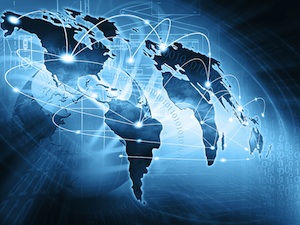Microsoft Report Analyzes Impact of Today’s Decisions on Future of Global Cybersecurity
Microsoft has released a new report that aims to show the technology industry and policymakers how technology, economic, and social policy decisions could influence cyberspace in the next 10 years.
In the report, “Cyberspace 2025: Today’s Decisions, Tomorrow’s Terrain”, Microsoft predicts that by the year 2025, over 91% of people in developed countries and 69% in emerging countries will be using the Internet, and dependence on the Web will become a reality. The policies, investments and programs of governments, businesses and societal organizations will shape the progress of technology and determine the future of ICT and global cybersecurity, Microsoft said.

The potential cyber trends outlined by Microsoft are based on the Cyber 2025 Model, an econometric model that builds on historical data of 80 countries from 1990 through 2012. The report is also based on research and insight from experts and thinkers in government, academia and multilateral institutions.
Published Monday, Cyberspace 2025 presents three future scenarios that are meant to show governments the relationship between cybersecurity and socio-economic conditions.
In the “plateau” scenario, which is characterized by asymmetry, some governments will adopt policies that promote ICT development, while others will create a business environment that restricts innovation. In this scenario, societies will not be able to address the challenges of cybersecurity because the decisions taken by governments disregard the trans-border nature of the Internet, and the focus will be more on compliance rather than security.
The “peak” scenario is ideal because there are clear and effective policies and standards in all countries, and a strong collaboration between governments. In this scenario, there is a rapid adoption of technology, and governance, economic development, and social conditions improve in all economies. The importance of cybersecurity is recognized by all countries, and national strategies are designed to enhance cooperation and information sharing.
The final scenario, dubbed “canyon,” is characterized by major failures in cybersecurity, limited adoption of ICT, and relatively slow economic and technology growth. Cybersecurity policies are nationalistic and protectionist, and there’s a negative attitude towards the global community. Instead of managing risk to support economic growth, governments invest in offensive cyber technologies.
“Risks are not just from the commonly recognized sources — such as criminals, malware, or even state-sponsored cyberattacks; they can emerge from policies as well. Societal responses to immigration challenges, education and workforce needs, trade liberalization, as well as international cooperation to resolve cyberconflict, will shape the future of cyberspace for both developed and emerging economies,” Paul Nicholas, senior director at Microsoft Global Security Strategy and Diplomacy, noted in the report.
“Today’s public policy decisions can address yesterday’s problems, or they can shape the future landscape of cyberspace,” Nicholas wrote in a blog post. In some instances, they may even accomplish both aims. The policymaker’s dilemma, however, is how to strike the right balance. This report gives policymakers, business leaders and other decision makers a framework for evaluating today’s policy decisions. Making more data-driven decisions and dedicating resources to support them can create a less daunting and more navigable terrain towards cyberspace for 2025, today, tomorrow, and beyond.
Earlier this year, a report released by the World Economic Forum during its famous annual meeting, outlined different scenarios for how things could look in 2020 based on the “conceivable value created from innovations in technology” that could be affected by global organizations’ ability to defend against cyber attacks.
According to statistics cited by the World Economic Forum (WEF) in its report, technology trends such as cloud computing and big data have the potential to create between $9.6 trillion and $21.6 trillion in value for the global economy. However, the reports notes, if attacker tactics outpace the capabilities of defenders, more destructive attacks will result and spark a wave of new regulations and corporate policies that could slow innovation with a massive economic impact.
The WEF report, written in collaboration with McKinsey & Company, predicted that failure to improve cyber security on a global scale could cost the world economy trillions of dollars in economic value and lead to more frequent cyber attacks.
Related: Web Inventor Tim Berners-Lee Says Governments Stifling Net Freedom
Related: Improved Cyber Security Could Save Global Economy Trillions














